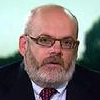The Federal Reserve is still expected to cut interest rates for the first time in 10 years next week despite better-than-expected second-quarter economic growth, analysts said Friday, after the first official reading of U.S. GDP.
“The Fed still has the green light to cut rates,” said Stephen Gallagher, U.S. chief of economics at Societe Generale.
“It is pretty difficult to pull back from signaling rate cuts and the risks are still there,” Gallagher said.
U.S. GDP grew at a 2.1% annualized pace in the three months to June, better than the forecast of 1.9%, but down from a 3.1% gain in the first three months of the year.
Read: The economy slows to 2.1% growth rate in the spring
In two days of testimony earlier this month, Powell signaled the central bank is ready to cut interest rates at the end of the month to cushion the economy against rising risks from slowing growth abroad and uncertainty caused by existing and import tariffs and the trade dispute with China.
“The economy is not broken, and it does not need Fed action to fix it, but it will get it,” said Ian Shepherdson, chief economist at Pantheon Macroeconomics.
Economists largely agree the Fed will cut rates by a quarter percentage point, after policy makers downplayed the chances of a half-point move late last week.
The FOMC, the central bank’s interest-rate committee, will meet next Tuesday and Wednesday. They will announce their decision at 2 pm on July 31 followed by a press conference by Fed Chairman Jerome Powell at 2:30 p.m.
Read: Fed signaling only modest rate cut plans
Some economists are still in the half-point cut camp though, even after the GDP report.
“The Fed already knows a lot of the information that they cared about” prior to today’s release, Seth Carpenter, chief economist at UBS said. “There shouldn’t be that much surprise.”
“We’ve stuck with our call of a 50 basis-point cut, while acknowledging loudly they could do 25 [bp],” Carpenter said.
“They’re cutting out of a fear there is a shock out there they can’t put their finger on,” he said.
Economists expect at least one dissent from policy makers on the 12 person Federal Open Market Committee that will make the decision.
Boston Fed President Eric Rosengren made it clear last week he was leaning against an interest-rate cut.


